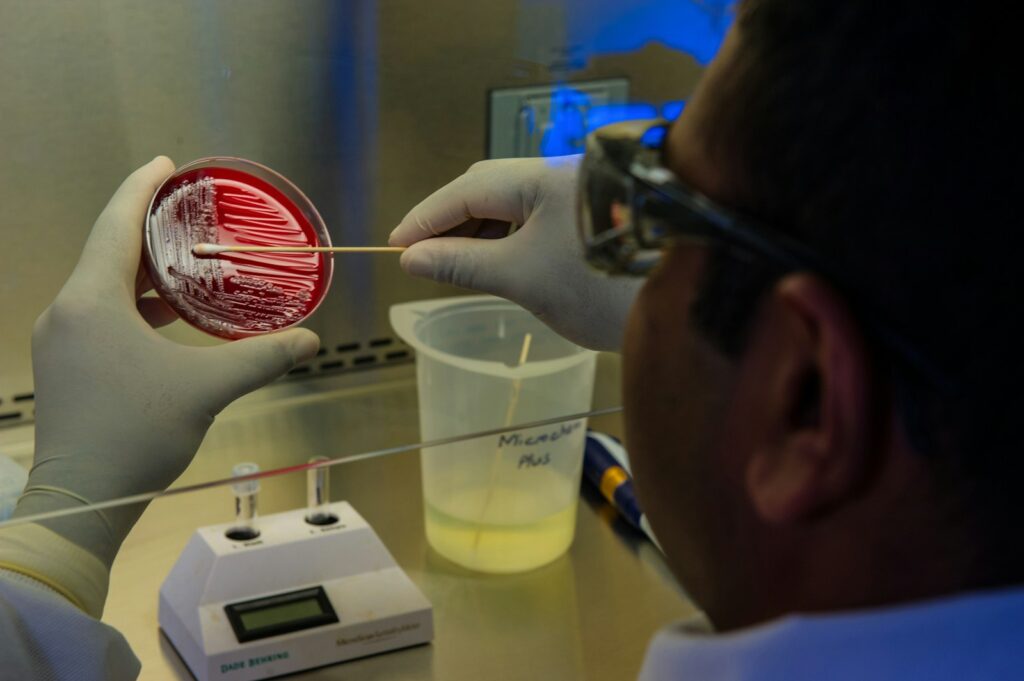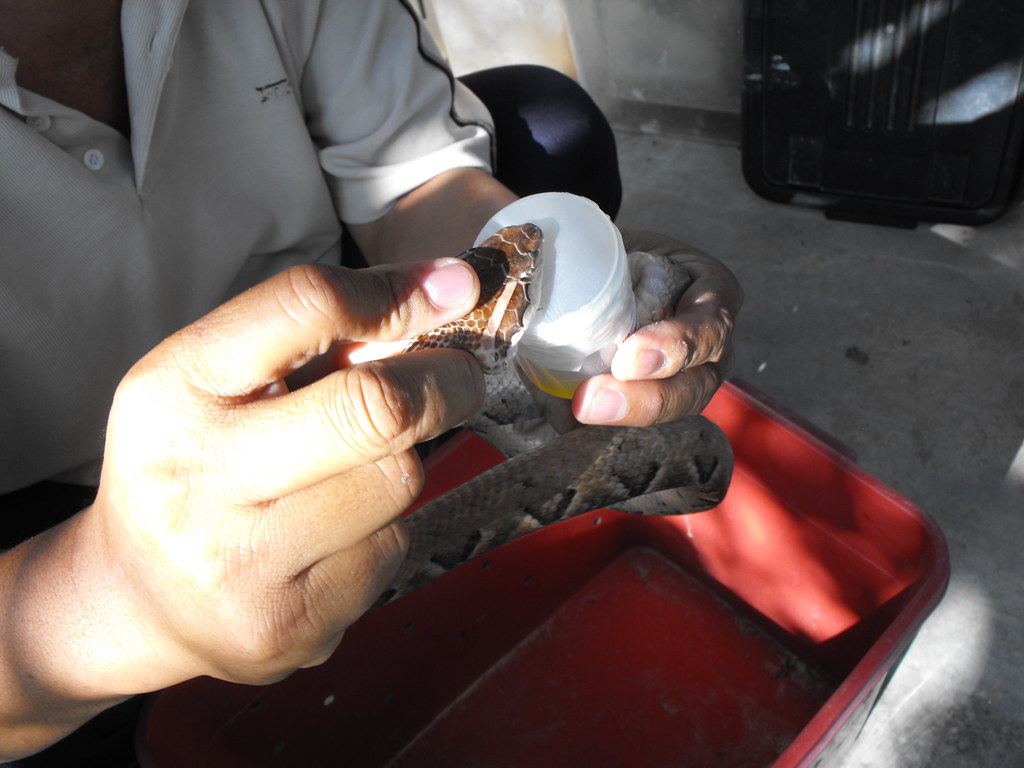Snake venom has terrified humans for millennia, with its reputation as a deadly substance capable of bringing down prey many times the size of the serpent itself. However, what many people don’t realize is that these complex cocktails of proteins and enzymes have become invaluable resources in modern medicine. Scientists have discovered ways to harness these potent compounds to treat conditions ranging from heart attacks to chronic pain. The transformation of snake venom from deadly poison to life-saving medicine represents one of the most fascinating paradoxes in medical science. This article explores eleven remarkable medical applications of snake venom that highlight how nature’s deadliest substances can become humanity’s healing allies.
Blood Clot Prevention and Treatment

Several medications derived from snake venom have revolutionized the treatment of blood clots and related cardiovascular conditions. Tirofiban (Aggrastat) and eptifibatide (Integrilin), both developed from pit viper venom, work as antiplatelet drugs that prevent platelets from sticking together to form dangerous clots.
These medications are commonly used during heart attacks and certain heart procedures to prevent further clotting. Another groundbreaking medication, bivalirudin (Angiomax), derived from the venom of the saw-scaled viper, serves as an anticoagulant for patients undergoing angioplasty. These medications have saved countless lives by preventing the formation of dangerous blood clots that could lead to strokes or heart attacks.
Pain Management Breakthroughs

Snake venom contains compounds that interact with pain receptors in ways conventional medications cannot, offering hope for chronic pain sufferers. Researchers have isolated peptides from the venom of the black mamba that target acid-sensing ion channels in nerve cells, providing powerful pain relief without the side effects or addiction potential of opioids.
These compounds, called mambalgins, can be as potent as morphine but work through an entirely different mechanism. Scientists are also studying conotoxins from cone snails (though not snakes, these venoms share similar medicinal potential) that block specific pain pathways with remarkable precision. These venom-derived analgesics represent a promising frontier for patients with neuropathic pain that doesn’t respond to conventional treatments.
Hypertension Management

One of the earliest and most successful medical applications of snake venom has been in the treatment of high blood pressure. Captopril, the first orally active ACE inhibitor, was developed based on peptides found in the venom of the Brazilian pit viper (Bothrops jararaca). This groundbreaking medication works by preventing the conversion of angiotensin I to angiotensin II, a potent vasoconstrictor that raises blood pressure.
Since its FDA approval in 1981, captopril and its derivatives have helped millions of patients control their hypertension and reduce their risk of heart attacks, strokes, and kidney problems. This medication represents one of the most commercially successful venom-derived drugs in history, highlighting the immense medical potential hidden in these toxic substances.
Diagnostic Tools for Hemostatic Disorders

Snake venoms contain numerous components that affect blood clotting, making them valuable tools for diagnosing bleeding disorders. Proteins isolated from Russell’s viper venom are used in laboratory tests to diagnose lupus anticoagulant syndrome, a condition that paradoxically increases clotting risk despite its name. Another diagnostic application involves using enzymes from the Eastern brown snake to detect Factor X deficiency in patients.
These highly specific reagents allow for precise diagnosis of coagulation disorders that might otherwise be difficult to identify. The specificity of these venom components makes them irreplaceable in many modern clinical laboratories, providing physicians with critical information needed to properly treat patients with complex hemostatic abnormalities.
Cancer Research and Treatment

Several snake venom components have shown promising anti-cancer properties that researchers are actively investigating. Contortrostatin, a protein found in copperhead snake venom, has demonstrated the ability to inhibit tumor growth and prevent cancer cells from spreading by blocking the formation of new blood vessels that feed tumors.
Studies on disintegrins, another class of venom proteins, have shown they can interrupt the metastatic process by preventing cancer cells from adhering to other tissues. Research involving crotoxin from rattlesnake venom has demonstrated selective cytotoxicity against certain cancer cells while sparing healthy cells.
While most of these treatments remain experimental, they represent a promising avenue for developing targeted cancer therapies with potentially fewer side effects than conventional chemotherapy.
Antimicrobial Applications

In an era of increasing antibiotic resistance, snake venom compounds are emerging as potential alternatives for fighting bacterial infections. L-amino acid oxidases found in various snake venoms have demonstrated broad-spectrum antimicrobial activity against both Gram-positive and Gram-negative bacteria, including drug-resistant strains.
Crotamine, a peptide from rattlesnake venom, has shown promising antifungal properties that could lead to new treatments for fungal infections. Researchers have also identified phospholipase A2 enzymes in certain venoms that can disrupt bacterial cell membranes, potentially overcoming resistance mechanisms that defeat conventional antibiotics. These antimicrobial properties could be particularly valuable as pharmaceutical companies search for novel compounds to address the growing global crisis of antimicrobial resistance.
Neurological Disorder Treatments

Compounds isolated from snake venoms show remarkable potential for treating various neurological conditions due to their ability to interact with specific neural receptors. Alpha-bungarotoxin from krait venom has become an invaluable research tool for studying nicotinic acetylcholine receptors, contributing to our understanding of myasthenia gravis and other neuromuscular disorders.
Cobra venom factor has shown promise in animal models for treating multiple sclerosis by modulating immune responses that attack the nervous system. Researchers are also investigating certain neurotoxins from snake venoms for potential applications in treating Parkinson’s disease and Alzheimer’s disease, as these compounds can target specific neural pathways involved in these conditions. The high specificity of these neurotoxins makes them particularly valuable for both research and potential therapeutic applications.
Diabetes Management

Components found in certain snake venoms have demonstrated potential for improving diabetes treatment through multiple mechanisms. Scientists have identified proteins in the venom of the Malayan pit viper that can stimulate insulin production in pancreatic beta cells, potentially helping patients with type 2 diabetes manage their blood glucose levels more effectively.
Other venom components show promise in protecting insulin-producing cells from the autoimmune attack that causes type 1 diabetes. Researchers are also exploring how certain snake venom peptides might improve insulin sensitivity in peripheral tissues, addressing one of the core problems in type 2 diabetes. While still primarily in the research phase, these discoveries could eventually lead to novel treatments for a condition affecting hundreds of millions of people worldwide.
Stroke Recovery Assistance

The blood-thinning properties of certain snake venoms have led to the development of treatments that can help patients recover from ischemic strokes. Ancrod, derived from the venom of the Malayan pit viper, has been studied as a fibrinogen-depleting agent that can help restore blood flow to brain tissue affected by clots during a stroke.
When administered promptly, these medications can help dissolve clots that are blocking blood vessels in the brain, potentially limiting the extent of brain damage. Research continues on modified versions of these compounds that provide the benefits of clot dissolution while minimizing the risks of hemorrhage.
These medications represent a delicate balance between preventing further clotting and avoiding dangerous bleeding, highlighting the precision with which venom components can be manipulated for therapeutic purposes.
Imaging and Diagnostic Technologies

Snake venom components are being utilized in advanced imaging techniques that help diagnose various medical conditions with greater precision. Alpha-neurotoxins labeled with radioactive isotopes can be used to visualize certain types of receptors in the brain, helping researchers study conditions like Alzheimer’s disease and schizophrenia.
Disintegrins from viper venoms, which bind specifically to integrins expressed on tumor cells, are being developed as tumor-imaging agents to help surgeons identify the boundaries of tumors during operations. Another application involves using modified phospholipases from cobra venom to detect structural abnormalities in cell membranes associated with various diseases.
These imaging applications highlight how the specific targeting abilities of venom components can be harnessed for diagnostic purposes rather than harmful ones.
Cosmetic and Dermatological Applications

The cosmetic industry has also found valuable applications for certain snake venom components, particularly in anti-aging products. Synthetic peptides inspired by waglerin-1, a component of temple viper venom, are used in some cosmetic formulations marketed as “topical Botox alternatives” because they can temporarily inhibit muscle contractions that cause wrinkles.
Other venom-derived compounds have demonstrated skin-smoothing properties by stimulating collagen production or improving skin elasticity. Some dermatological treatments utilize the controlled inflammatory response triggered by certain venom components to promote skin renewal and healing of conditions like psoriasis and eczema.
While the efficacy of some cosmetic applications remains debated among scientists, the dermatological applications represent another diverse area where venom components are being repurposed for human benefit.
The transformation of snake venom from deadly poison to life-saving medicine represents one of nature’s great ironies and modern science’s remarkable achievements. These eleven medical applications only scratch the surface of the potential that lies within these complex biological compounds. As research techniques advance and our understanding of venom components deepens, we can expect even more medical breakthroughs from these fascinating substances.
What once inspired only fear now offers hope to millions of patients worldwide, reminding us that sometimes the most powerful healing tools come from the most unexpected sources. The journey from venom to medicine exemplifies how scientific curiosity and persistent research can transform nature’s deadliest weapons into humanity’s allies in the fight against disease.
















Leave a Reply